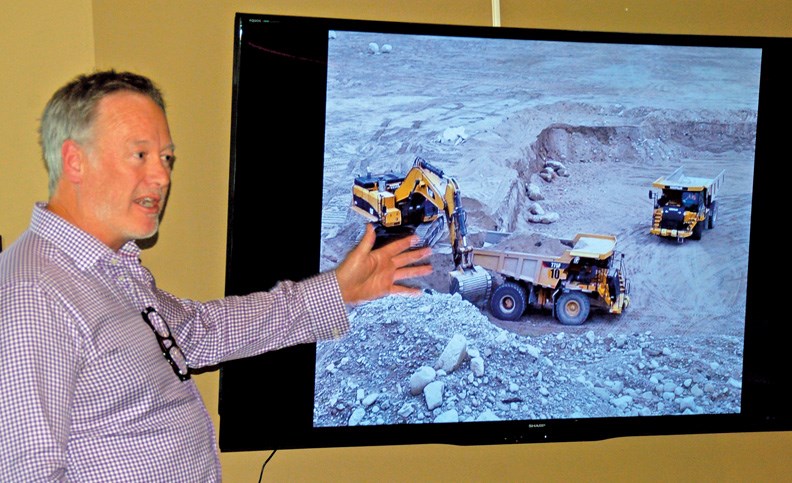Sechelt’s new mine manager plans to grow operations at Lehigh Heidelberg Cement and reclaim some land previously mined for a solar, food and bee farm.
Mine manager Scott Broughton told Sechelt and District Chamber of Commerce members about his plans during a luncheon May 26.
Broughton said the plant in Sechelt has been operating for about 27 years and directly employs 62 people currently. He wants to increase that workforce to about 90 by the end of 2016. The increased workforce is needed for an increase in production that Broughton is working toward.
“I’ve been here since March. I’ve seen lots of mine sites and I had a chance to assess how this operation works and what makes it tick,” Broughton said.
“I think there’s a great opportunity for us to enhance and strengthen the performance of this site from an operations point of view.”
He said the site also has “great potential” to run for another 50 years. “That makes this a place where generations of people can come and work at this site. We already have mothers and sons working at this site and not many mines get to be that multi-generational,” Broughton said.
Making the mine last longer will require some long-term planning that Broughton said his staff will spend all summer hashing out.
“How do we essentially establish where we should put a new plant, where we should develop, how to make it better for the community? We do make noise, we do make dust, we’re trying to mitigate those things, but in the next evolution of the site we have a chance to make it much better,” Broughton said.
In 2015, the site generated about 3.7 million tonnes of rock and sand material that was shipped all over the world for use in various beach and building projects.
The mine is already on its way to increasing that total volume considerably this year.
“We’re on track to be closer to about five million, maybe plus five million tonnes in 2016 and aiming to make that higher,” Broughton said.
The mine in Sechelt produces 13 different kinds of material and sells it at a cost of about $10.81 a tonne, Broughton said, noting the operation sold about $40 million worth of material last year.
“So it’s a pretty robust operation,” he said.
“It is one of the largest in Canada that makes sand and gravel.”
Having been in business for nearly three decades, the Sechelt operation has fully mined some areas, and one in particular – at the base of the hill between Lehigh and Salish Soils – is being eyed for a solar/food/bee farm development.
“I’m really keen on this with Aaron [Joe from Salish Soils] and with Dennis [Olson from Olson Electric] as well, thinking about how we can actually trigger an idea for land use at one of the areas that we’re about to reclaim, and that’s by building something that we’ve dubbed the Sun-Mine Coast,” Broughton said.
“We want to establish a fairly significant but initial solar array on some of the lands close to Salish Soils. It may be able to power a couple hundred houses or something like that. That would be a phenomenal use of the flat lands that we have right adjacent to Aaron’s Salish Soils.”
Broughton said the solar farm would create a good training site for those wanting to get involved in the solar movement and that it would complement an array of beehives and a community garden already started on the site by Salish Soils and bee farmer Harry Meier, which would be expanded with the cooperation of Lehigh.
“So a little bit of a vision here on what the site can do and to show the public and the community that this mine has a future as well,” Broughton said.
He noted Lehigh is now looking for funding to put the Sun-Mine Coast idea into action.
“If we can find the funding for that, we have a great opportunity to build that into something much, much more,” he added.



